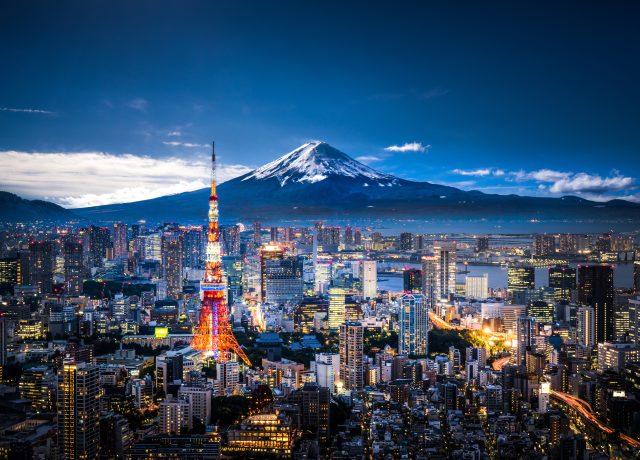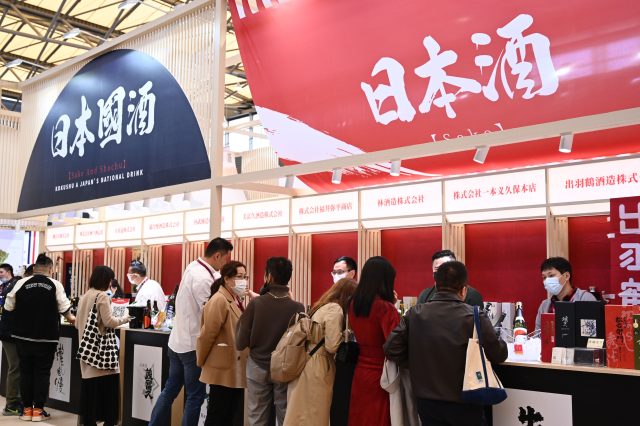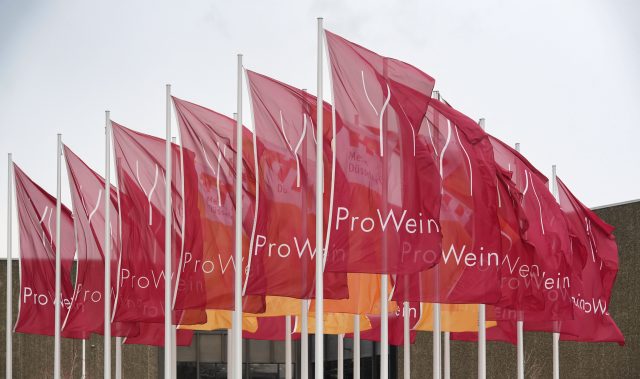This website uses cookies so that we can provide you with the best user experience possible. Cookie information is stored in your browser and performs functions such as recognising you when you return to our website and helping our team to understand which sections of the website you find most interesting and useful.
ProWein director: ‘We want to look forward, not back’
Just a year into the job, and ProWein director Peter Schmitz is preparing to lead the world’s biggest trade fair on its inaugural venture in Tokyo. Eloise Feilden finds out what makes the new boss tick.

Anyone who works in the wine and spirits industry knows about ProWein. The trade fair organiser, headquartered in Düsseldorf, Germany, celebrates its 30th anniversary this year. What’s more, it heads into its third decade with a new director at the helm. Peter Schmitz, who has worked at ProWein organiser Messe Düsseldorf since 1987, took over in February last year following the departure of former head Bastian Mingers in June 2022.
Now a year into the role, Schmitz has found his footing as head honcho. The new boss is clear about what he doesn’t want when marking the 30-year milestone. “We will not have a big party,” he states – a decision he has come to internally with the team at Messe Düsseldorf. But what first appears to be a joyless statement turns out to be an optimistic one. “We don’t want to look back. We want to look into the future,” he explains.
Schmitz may not want to dwell on the past, but the history he is building on is an important one. What began in western Germany in 1994 with just 321 exhibitors and 1,517 visitors has now turned into one of the largest wine and spirits exhibitions in the world.
In spite of public transport strikes, 49,000 trade visitors from 141 countries attended the German show in 2023. Not only are its visitors global, but the past decade has seen ProWein ramp up its presence in international markets too.
The trade fair organiser launched its first international exhibition in Shanghai in 2013, and its presence in Asia has grown from there. It now boasts five annual or biannual trade fairs in Shanghai, Hong Kong, Singapore, Mumbai, and, for the first time this year, Tokyo.

Each of the exhibitions in Asia offers a unique identity reflective of the market itself. India is what Schmitz would call a “difficult market”, with complicated import restrictions and a smaller population of consumers wealthy enough to have a disposable income, meaning interest from the trade tends to centre around the hotel and catering industries. Singapore, a more well-established, small and wealthy market, acts as a commercial hub, and draws a more diverse international crowd, as well as the big-name hotels. ProWine Tokyo is, as Schmitz puts it, “our newest baby”.
Japan, as the third-largest economic power in the world, offers huge potential, especially due to its “unique and sophisticated eating and drinking culture”. “In 2022, per capita sales of wine were around €66 (HK$561), and this is well above the global per capita sales of around €37,” Schmitz says. “This makes Japan the ideal location for a new exhibition.”
What sets ProWine Tokyo apart is its focus on pairing. “When you just look at ProWine in Tokyo, it’s more or less the same as we are doing in Shanghai or Singapore, but the exhibition runs alongside a food exhibition, and from our perspective, that makes sense in terms of food pairing for the eating and drinking culture there.”
ProWein’s organisers have been eyeing up Japan for a while, discussing potential local partnerships, and have now secured a deal with FABEX Tokyo, ISM JAPAN and anuga SELECT Japan. Taking place on 10-12 April, preparations are off to a “successful start”, with 200 exhibitors already signed up. Schmitz is expecting well over half of the exhibitors to be domestic wine and spirits producers, and up to 90% of visitors are likely to come from Japan.
This, he argues, is a tactical move. “From a strategic point of view it’s important for us to have these satellites, with local attendees,” he says. “For us it is important to have international visitors and exhibitors here in Düsseldorf at the main exhibition, which is the most important exhibition for this industry.”
Satellite shows are therefore like an appetiser for the main meal – ProWein Düsseldorf. “Many of these local visitors first get to know the regional ProWine, in Tokyo or Shanghai or Hong Kong, then it’s usually the case that they become curious about Düsseldorf.”
Shanghai is a prime example. Just 60 Chinese trade visitors were present at the 2010 ProWein Düsseldorf exhibition. That number has risen to 450 at its peak, Schmitz says. “OK, there was a cut with the pandemic, but in 2023 we saw a slight recovery of around 280 visitors from China, and that will hopefully grow again.”

A global pandemic did not bode well for a company whose business relies on large international groups flocking to one place. Shows were cancelled in Singapore in 2020 and Shanghai in 2022, and both Düsseldorf exhibitions in 2020 and 2021 were skipped.
But the “force majeure” that was Covid-19 is finally abating, and is no longer the biggest obstacle on the road to growth. Now, political tensions are highest on Schmitz’s list of concerns. Chinese tariffs Crippling Chinese tariffs imposed on Australian wine, in place since 2020, have had a grave impact on the Aussie wine trade. Australia’s global wine exports dropped by 30% by value in 2021 as tariffs wiped nearly AU$1 billion off the value of the country’s exports to mainland China.
Even now, more than three years after the tariffs were introduced, Australia continues to suffer, and, according to Rabobank, if China reopened tomorrow it would still take Australia two years to clear a surplus 2.8 billion bottles languishing in tanks and cellars as a result of the drastic cut to exports.
The negative impact has trickled down. ProWein has been affected by the ongoing restrictions, particularly when it comes to the Shanghai exhibition, where focus has shifted more towards European consumers to fill the gap left by Australia.
In October 2023, Australia’s prime minister, Anthony Albanese, revealed that the two governments have agreed to a five month long review of the tariffs. With a solution on the horizon, Schmitz hopes to get “back on track with Australia”.
But other political roadblocks lie ahead. “There could be challenges coming up,” says Schmitz. “What will happen at the end of this year when we perhaps have another government in the USA? These are questions we don’t have the answer to now, and that could happen in Asian markets too.”
Beyond politics, there is one challenge which outweighs the rest: a decline in wine consumption. “I think we are all faced with one problem and that is the consumption of wine. This is globally a problem,” he notes. Despite still accounting for 48% of global wine consumption in 2021, European Union figures have been in decline for over a decade. Wine consumption fell by almost a quarter (24%) in the 10 years to 2020, and this decline is expected to continue, though at a slower rate.

To combat this, ProWein is turning its attention to spirits. The company’s CEO puts it simply: “The spirits industry is the only one growing in wine and spirits at the moment.”
According to Statista, sales will reach €601.70bn by 2027, when the average per-capita consumption will be 4.76 litres. ProWein Düsseldorf 2024 will debut its ProSpirits hall in March, complete with 300 exhibitors from 40 countries. “In the future that will also play a role in our satellite exhibitions,” says Schmitz.
Host to some of the best and most innovative cocktail bars in the world, Asian markets like Singapore, Hong Kong, and Mumbai are the perfect location for a more spirits-centric approach to exhibitions. But wine should not be forgotten. Europe’s consumption may be down, but Asia represents burgeoning potential for the category. Wine in Asia is expected to grow annually by 5.19% to 2027, according to Statista data.
In China, wine has now become a serious alternative to baijiu, the country’s national spirit. With a growing population (which currently sits at 1.4bn), China’s number of imported wine drinkers has also grown by about 14% since 2019.
Meanwhile, in Hong Kong, the market for wine is expected to show volume growth of 2.5% in 2024. And Japan, where the wine market was expected to be worth US$3.8bn in 2023, is predicted to record 1.6% volume growth in 2024.
Having cornered the Japanese market, Schmitz is hitting pause on further expansion in Asia. “From our point of view, at this time there are enough exhibitions for the wine and spirits industry in Asia. Maybe other markets in the world might be interesting for the future, but for now there is nothing to tell,” he says.
When asked about his competition, he laughs. “It’s not a secret, we are not alone.” Rival trade fair organisers also run exhibitions in some of the same markets, namely Singapore, Hong Kong, and Mumbai. But Schmitz isn’t worried. Why? He shrugs: “We are running the best shows.”
Related news
Suntory expands water education provision target for 2030

